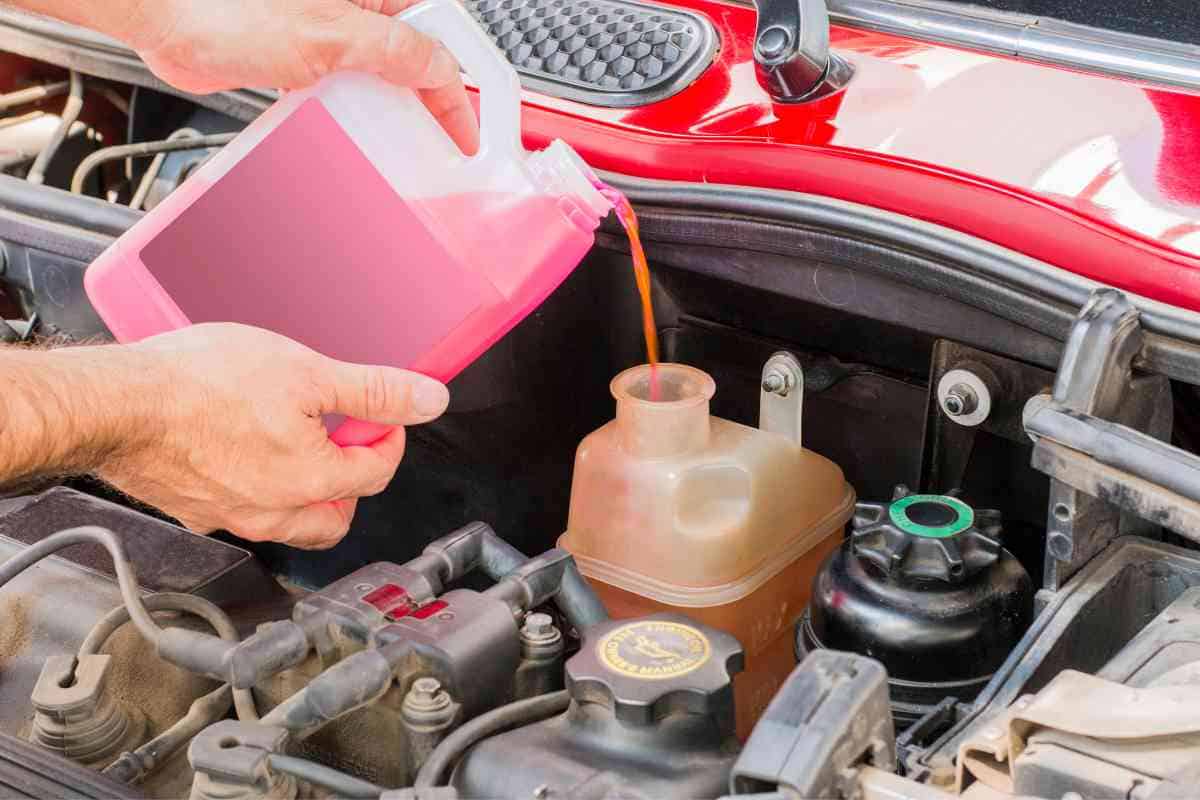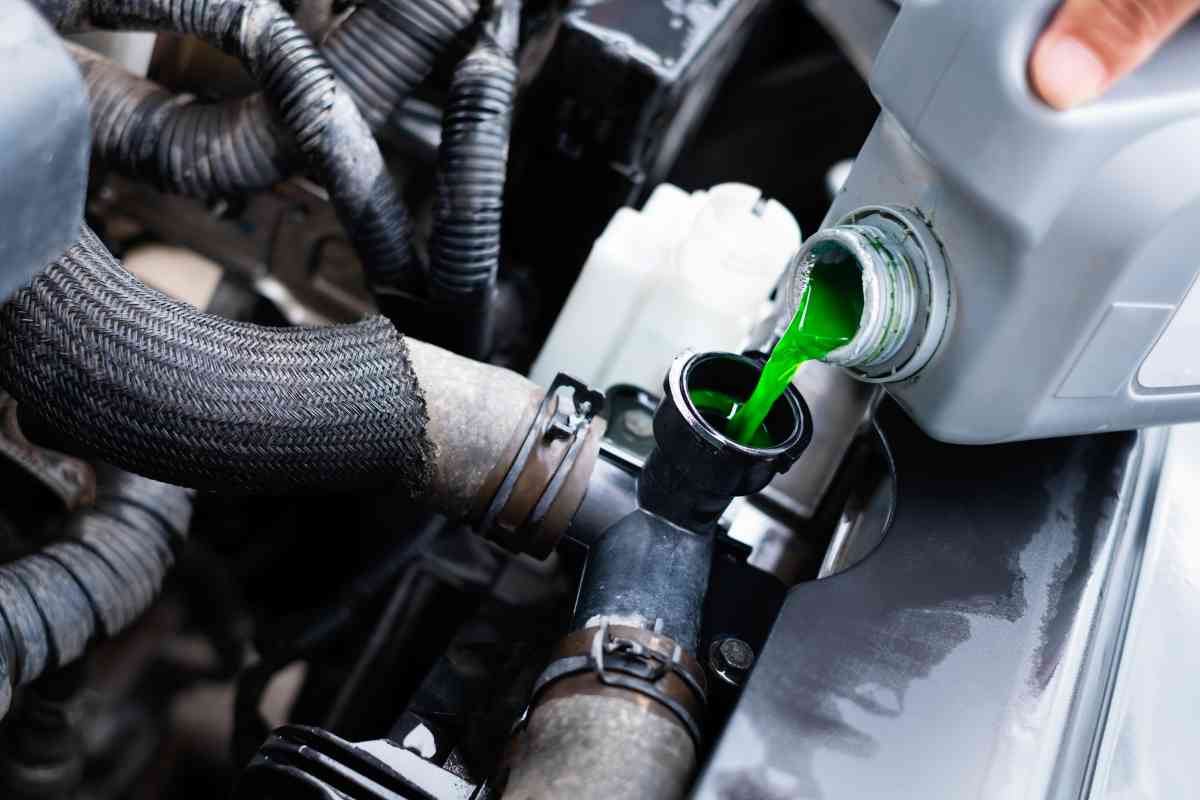Can You Mix Antifreeze Colors: Red, Orange, Yellow, Pink, or Green? (Answered!)
Coolant comes in a rainbow of colors. Are you OK to mix antifreeze colors in your vehicle’s coolant tank?
Can you mix antifreeze colors?
The answer is mostly no. Most coolant colors are specific to a type of coolant and can cause at least the need to flush out the coolant system if mixed improperly. Even the same color of coolant doesn’t necessarily mean it’s the same type – we strongly recommend reading the owner’s manual or the previous bottle of coolant to determine what you need.
We’ll walk you through why coolant types don’t mix well with each other, and you’ll learn a bit more about what coolant does. We’ll also discuss what to watch out for with coolant – all with the intent of keeping your engine running at the right temperature, corrosion free, and safe.

Why can’t I mix coolant colors?
We have a couple of not-so-positive ways of answering that: Some older vehicles require a coolant that uses inorganic compounds like phosphates to stop corrosion from happening.
This kind of coolant is bright green and doesn’t last more than a couple of years before needing changing. You probably won’t use this kind of coolant anyway.
Even “newer” coolants that last longer and use organic compounds don’t mix well with others.
Organic acid coolants are usually red or orange. The newest kind of coolant blends organic with inorganic and adds silicates, resulting in an orange or yellow color.
You might even come across blue coolant if you have a turbocharger or supercharger in your vehicle.
Unfortunately, you may have noticed by now that some opposite kinds of coolant are also the same color – especially in the orange or yellow colors.
The biggest differences here are what temperature these coolants guard down to – and whether or not they are meant to guard against corrosion.
The worst mixtures to make are pink coolant and the blue coolant needed for high-performance vehicles. You’ll make what amounts to a slime because they have different densities.
Good luck cleaning it up! Green and yellow are also not meant to be together, and the combination could corrode the cooling system and potentially cause engine damage.
Why would mixing colors cause engine damage?
A few things can happen rather quickly with the wrong kind of antifreeze. Overly corrosive antifreeze can wear and break engine seals.
Different colors also have different strengths and can cause one type of coolant to affect others in a negative way, resulting in too thick or too thin of coolant.
Mixing coolant can be unexpectedly expensive and not a good idea at all for most vehicles.

Where should I learn what coolant my vehicle takes?
Just to clarify: You can mix coolants – you should just know what you are doing first. The first places to consider finding information about which coolant your vehicle needs are the Internet and your vehicle’s manual.
We wouldn’t even suggest trusting a strange in a forum on the Internet – they can be wrong too.
The manual should explain what kind of coolant you need down to what the label should say, like “hybrid organic” or “organic,” and what color the coolant should be. You can check this against what color of coolant is currently stored in the vehicle to confirm.
Here is where things can get tricky – and also how to avoid trickiness. Some manufacturers will tell you in the instructions which colors and coolant kinds can mix.
The companies that make these fluids are a great source of info, but if you don’t know what you are doing, then we still wouldn’t suggest following their directions just because getting it wrong can still be harmful to the engine.
So our two suggestions are to look up a variety of pieces of info about your vehicle – ranging from what kind of oil it takes (including weight, viscosity, and special elements), to the color and type of coolant it needs.
Get a couple of quarts of the right kind of oil, and a gallon or two of the right kind of coolant – and store them in your trunk or garage.
We think that people feel the need to mix coolants because they don’t have enough of one to completely refill their coolant when something happens, and it does run low.
The simple solution is to have enough of the kind in what amounts to an emergency roadside kit that you don’t have to mix them!
How often should I change coolant?
Most of today’s vehicles come with coolant that is meant to last nearly forever. You’ll want to check with your service department and your vehicle’s manual to see how often they recommend changing the coolant.
Other signs that you need to change the coolant include having an engine that is starting to overheat.
Another is when the coolant tank line starts to drop a little bit – which might also be a sign of a coolant leak.
Surprisingly, coolant can be full and still ineffective if the compounds within have worn off. This eventually leads to an overheating engine.
The best way to fight off any issues with coolant or your fluids, in general, is to have them checked regularly by a technician at your local garage.
Service departments check these issues because, yes, they are looking for problems – and because finding a problem that has a cheap fix is much easier than getting someone to spend thousands of dollars to fix their vehicle!
When should you mix coolant?
When a manufacturer explicitly states that you can mix coolant and the coolants are well enough labeled that you can tell that you are able to mix coolant – then you can do it.
Otherwise, mixing coolant just isn’t worth the risk to your engine.
Instead, have enough of the right type around and you won’t have to worry about it.
You’ll also want to watch out for specific instructions about mixing coolant with water – and be careful about what kind of water you use.
Having coolant that mixes with water will be a rare situation, but mixing the right amount with the right kind of water (usually distilled), is vital to keep mineral buildups out of your engine.
What should I do if I do mix coolant?
If you are confident in your automotive abilities, try to start and drive your car. If you aren’t, get the vehicle towed to your nearest service shop so you can have the coolant system drained.
While getting the coolant system cleaned out isn’t the cheapest process, it is much better than paying for multiple leaks and seeping corrosion that could wreck your whole engine.
What does coolant do?
As the name implies, coolant is meant to help cool your engine down – as well as keep your engine from freezing at the same time, which is why it is also known as antifreeze.
Antifreeze is both why your engine can operate safely in 110+ degree temperatures and when the air is cold, your vehicle whines loudly when first starting up.
Coolant does do one more very important thing, though: The compounds within help keep the engine from corroding
Among the reasons why having the right kind of coolant is so important is because when the metals in your engine meet the wrong kind of coolant, corrosion can quickly take over and render your engine useless, as corrosion weakens metals and causes cracks in a system designed to handle under high heat and stress.

Key Takeaways
- Don’t mix coolant without specific instructions to do so from your vehicle’s manual or from coolant bottles that agree.
- Coolant’s purpose is to prevent corrosion and keep vehicle’s from freezing and overheating. Making changes to coolant can result in serious corrosion and engine damage from operating at incorrect temperatures
- We suggest you keep a bottle or two of coolant with your vehicle in an emergency kit, with other helpful vehicle fluids like engine oil.
- Have your fluids checked regularly when you visit your local service department to make sure the coolant is still working well, especially with an older car.
